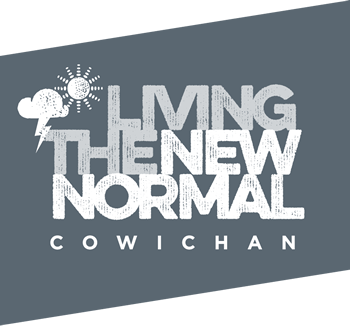Weekly Water Use
Weekly Water Use
Below are details regarding the volume of water used within the Cowichan Region. Data are provided by the various regional and municipal water systems. In some areas, water is provided by Improvement Districts or private water systems. The operators of these systems are not required to provided data to the CVRD on the volume of water used, but are included below to provide a more complete picture of the extent of water withdrawals in the region. Not included below are agricultural users or households with private wells. To find your water system, check out our interactive Water Systems Map.
The amount of water used is measured in cubic metres (m³). What is a cubic metre? It is a cube, 1m x 1m x 1m, or roughly the size of a stove, washing machine, or filing cabinet. An olympic swimming pool holds roughly 2,500 cubic metres.
Data are updated as water use estimates are provided by CVRD and municipal water system operators.
System Information
The CVRD operates 19 water utilities providing nearly 3,700 connections to people and businesses in communities across the region. These utilities withdraw from various ground and surface water bodies.
System Information
The Town of Ladysmith water supply system has over 3,350 connections delivering water to 9,400 people in the Ladysmith and Diamond areas as well as the Stz’uminus First Nation. Water is withdrawn from Holland and Stocking Lakes.
System Information
The City of Duncan’s water system delivers water to over 7,000 homes and businesses, serving approximately 15,000 people in the City of Duncan, Eagle Heights, and some neighbourhoods of North Cowichan and the Cowichan Tribes. Groundwater is withdrawn from the aquifer adjacent to the Cowichan River.
System Information
The Municipality of North Cowichan’s South End water supply system is fed from wells which pump from the aquifer adjacent to the Cowichan River. The South End water system has over 6,000 connections, serving approximately 14,452 people.
System Information
The Municipality of North Cowichan’s Chemainus water system withdraws surface water from Bannon Creek / Holyoak Lake from June 15-Oct. 15 and from groundwater wells adjacent to the Chemainus River the remainder of the year. The Chemainus water system has nearly 2,500 connections, serving approximately 5,839 people.
System Information
The Municipality of North Cowichan’s Crofton water system is fed from the Catalyst Mill which extracts water from the Cowichan River. The Crofton water system has 1,062 connections, serving approximately 2,538 people.
System Information
The Town of Lake Cowichan water system delivers water to nearly 1,500 connections, serving a population of 3,100 and 104 commercial and other buildings. Water is withdrawn from Cowichan Lake.
Improvement Districts / Private Systems
No Data |
|---|
Unknown |
|---|
| Not required to provide updates |
System Information
There are 10 Improvement Districts and 9 private water systems which supply water to local residents within the CVRD. These utilities withdraw from various ground and surface water bodies.
Catalyst – Crofton Pulp Mill
1,028,000 m³ |
|---|
average weekly withdrawal |
|---|
| 2015 estimate |
System Information
Catalyst withdraws water from the Cowichan River. Catalyst Paper also tracks water use based on effluent discharge. Across the company, Catalyst discharged 75 m3 of water per tonne of paper product in 2014.
Seasonal Water Use
The amount of water we use depends on many factors. We generally use less water in the winter months when the weather is cool and rainy. In the spring, warmer, sunnier weather leads to an increase in water use for water lawns and gardens. This usage peaks in mid to late summer, then declines as temperatures cool and the rains begin again in autumn.
Despite receiving over 1,000mm of rain each year, we are increasingly seeing drought conditions during the summer months when the demand for water is at the highest. Water use restrictions are necessary to reduce our water usage, ensuring that we have enough water in lakes and aquifers to last until the rains return each fall.
The graph below compares weekly water use throughout the Cowichan Valley with weekly average temperatures and rainfall for 2015. The pattern of increasing water use is evident as temperatures increase and rainfall declines in April and May. The start of the various stages of water use restrictions are also shown on the graph, with Stage 3 restrictions showing the greatest reduction in water use.



